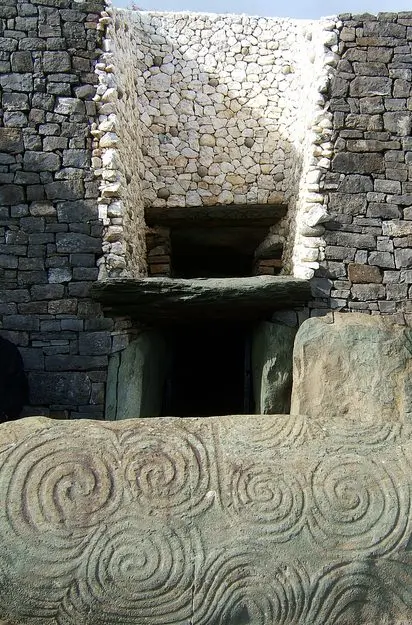Archeoastronomy is the study of how ancient cultures understood and utilized celestial phenomena. It combines the fields of archaeology and astronomy to explore how people in the past observed, interpreted, and incorporated astronomical events—such as the movements of the sun, moon, stars, and planets—into their cultural practices, rituals, and structures. This discipline often investigates ancient monuments, texts, and artifacts to understand how these astronomical observations influenced societies, including their calendars, agricultural practices, and religious beliefs.
Archeoastronomy is a captivating field that merges the wonders of the cosmos with the richness of ancient cultures. It delves into how historical societies understood and utilized astronomical phenomena, providing profound insights into their beliefs, practices, and daily lives. By studying the connections between celestial events and cultural frameworks, archeoastronomy reveals the ways in which early civilizations navigated and interpreted the world around them, enhancing our understanding of human history and cultural development.
What is Archeoastronomy?
Archeoastronomy is defined as the study of how ancient cultures observed, understood, and integrated celestial phenomena into their societal frameworks. This interdisciplinary field combines elements of archaeology, anthropology, and astronomy, allowing researchers to unravel the complex relationships between celestial events—such as the movements of the sun, moon, stars, and planets—and the cultural practices of past civilizations.
The field emphasizes the diverse ways different cultures perceived and interacted with the cosmos. For instance, it investigates how ancient peoples aligned their structures, developed calendars, and created mythologies based on their observations of celestial bodies. By bridging the gaps between these disciplines, archeoastronomy enriches our understanding of how early humans made sense of their environment and their place within the universe, providing invaluable insights into the development of scientific thought throughout history.

Key Aspects of Archeoastronomy
Cultural Context
Different cultures throughout history have perceived celestial bodies and events in unique ways, often attributing significant meanings to them. For example, many ancient civilizations viewed the sun and moon as deities, influencing their mythology, rituals, and daily lives. In Mesoamerica, the Maya civilization intricately linked celestial observations with their religious practices, believing that the movements of celestial bodies directly influenced their agricultural cycles and societal events. Similarly, in ancient Egypt, the heliacal rising of the star Sirius marked the onset of the Nile flooding, which was crucial for agriculture. Such perceptions not only shaped their worldviews but also guided their practices, highlighting the deep cultural significance ascribed to celestial phenomena.
Astronomical Alignments
One of the most fascinating aspects of archeoastronomy is the study of ancient structures and monuments that exhibit astronomical alignments. These alignments can often reveal the advanced understanding that ancient peoples had of celestial events. For instance, Stonehenge in England is famously aligned with the sunrise on the summer solstice, suggesting its use in marking significant solar events. Similarly, the Great Pyramids of Giza are oriented with remarkable precision to the cardinal points, showcasing the Egyptians’ sophisticated knowledge of astronomy. Other examples include the Mayan observatories, such as El Caracol at Chichén Itzá, which allowed for observations of celestial movements that were essential for their calendrical systems.
Calendrical Systems
Ancient societies developed complex calendrical systems based on their observations of celestial phenomena. These calendars were critical for organizing agricultural practices, religious festivals, and social events. For example, the Inca civilization used a solar calendar to dictate agricultural activities, ensuring that planting and harvesting aligned with seasonal changes. The lunar calendars of many cultures, such as the Babylonians, played an essential role in determining religious observances and societal events. Understanding these calendrical systems reveals how deeply intertwined astronomy was with daily life and governance in ancient societies.
Artifacts and Texts
The analysis of artifacts and texts is crucial in understanding ancient cosmology and rituals. Items such as pottery, carvings, and inscriptions often contain astronomical symbols or references that provide insights into how celestial events influenced cultural practices. For instance, the Nazca Lines in Peru, large geoglyphs etched into the desert floor, are believed by some researchers to have astronomical significance, possibly serving as markers for celestial events. Similarly, ancient texts, like the Babylonian astronomical diaries, provide detailed records of celestial events and their interpretations, shedding light on the relationship between astronomy and daily life in those societies.
Interdisciplinary Approach
Archeoastronomy exemplifies the need for a collaborative approach, integrating perspectives from various disciplines such as archaeology, astronomy, and anthropology. This interdisciplinary nature enhances our understanding of ancient societies by combining archaeological findings with astronomical data and cultural interpretations. For example, archaeologists might excavate a site and discover a structure aligned with a celestial event, while astronomers can analyze the celestial mechanics to provide context for why that alignment was significant. By working together, researchers can develop a more holistic understanding of how ancient peoples engaged with their environment.
Modern Implications
Insights gained from archeoastronomy significantly contribute to our understanding of human history and the evolution of scientific thought. By studying how ancient civilizations observed and interpreted celestial phenomena, modern researchers can trace the development of astronomical knowledge and its impact on culture and society. Furthermore, the relevance of archeoastronomy in contemporary research is underscored by its ability to foster interdisciplinary collaboration, encouraging new ways of thinking about historical knowledge and cultural practices. As modern science continues to evolve, the lessons learned from ancient practices can offer valuable perspectives on humanity’s relationship with the cosmos.
Resources for Further Reading
Books
- “Archaeoastronomy in the Americas” by Anthony Aveni
- This book offers an overview of how various ancient cultures across the Americas engaged with astronomical phenomena. Aveni explores the cultural contexts and significance of celestial observations, providing a comprehensive examination of archeoastronomy in this region.
- “The Oxford Handbook of Archaeoastronomy” edited by Clive Ruggles
- A comprehensive resource that covers a wide range of topics in archeoastronomy, including theoretical discussions, case studies, and methodologies. This handbook serves as an essential reference for scholars and students interested in the field.
- “Skywatchers, Shamans, and Kings: Astronomy and the Early Civilizations of the Near East” by Anthony Aveni
- Aveni examines how ancient Near Eastern societies, such as the Babylonians and Egyptians, incorporated astronomical observations into their religious and societal frameworks. This book provides insight into the early development of scientific thought in relation to celestial phenomena.
Academic Journals
- “Archaeoastronomy”
- This journal focuses on publishing original research and studies related to archeoastronomy. It features articles that explore the astronomical practices of ancient cultures and their implications for understanding history and culture.
- “Journal for the History of Astronomy”
- This journal includes articles that delve into the historical context of astronomical practices in ancient societies. It offers insights into how these practices influenced the development of scientific knowledge and cultural beliefs over time.
Online Resources
- NASA’s Archaeoastronomy
- NASA Archaeoastronomy offers an overview of the field, highlighting various projects and findings. It provides accessible information on how ancient cultures observed celestial phenomena and the relevance of these studies today.
- The Society for Archaeoastronomy in the Americas (SAA)
- SAA Website is an organization that promotes research and education in archeoastronomy. The site provides access to resources, conference information, and publications, fostering collaboration among scholars and enthusiasts in the field.
- Archaeoastronomy and the Ancient Cultures of the Americas
- Archaeoastronomy is a resource hub that focuses on the intersection of astronomy and ancient cultures, offering articles, research papers, and links to further studies in the field.
Conclusion
Archeoastronomy plays a vital role in understanding ancient cultures by revealing how they interpreted and integrated celestial phenomena into their societal frameworks. By examining the relationships between the cosmos and human practices, we gain valuable insights into the beliefs, technologies, and knowledge systems of past civilizations. The resources provided above can deepen your understanding of archeoastronomy and inspire further exploration into this fascinating field. Whether through books, academic journals, or online resources, there is a wealth of information available for those interested in uncovering the astronomical wonders of ancient societies.
Frequently Asked Questions (FAQs)
- What is archeoastronomy?
- Archeoastronomy is the study of how ancient cultures understood and utilized celestial phenomena. It combines elements of archaeology, anthropology, and astronomy to explore the relationships between celestial events and cultural practices of past civilizations.
- Why is archeoastronomy important?
- Archeoastronomy is important because it helps us understand how ancient societies interpreted their world and the cosmos. It provides insights into their beliefs, agricultural practices, and the development of scientific thought, revealing the deep connections between humanity and the universe.
- How do archeoastronomers study ancient cultures?
- Archeoastronomers study ancient cultures by examining structures, monuments, artifacts, and texts. They analyze astronomical alignments, calendrical systems, and cultural narratives to uncover how celestial events influenced daily life and rituals.
- What are some examples of ancient structures with astronomical alignments?
- Examples include Stonehenge in England, which is aligned with the summer solstice sunrise, and the Great Pyramids of Giza in Egypt, which exhibit precise orientations related to cardinal points. The Mayan observatories, such as El Caracol at Chichén Itzá, also demonstrate sophisticated astronomical knowledge.
- How did ancient societies develop their calendars?
- Ancient societies developed calendars based on observations of celestial phenomena, such as the cycles of the moon and the sun. These calendars were crucial for agricultural planning, religious ceremonies, and social organization, allowing societies to align their activities with seasonal changes.
- What role do artifacts and texts play in archeoastronomy?
- Artifacts and texts are vital in archeoastronomy as they provide insights into how ancient cultures understood and engaged with celestial phenomena. Items like pottery, carvings, and inscriptions can contain astronomical symbols and references, shedding light on rituals and cosmological beliefs.
- How does archeoastronomy contribute to modern scientific understanding?
- Insights gained from archeoastronomy enhance our understanding of human history and the evolution of scientific thought. By studying ancient practices, researchers can trace the development of astronomical knowledge and its impact on culture, informing contemporary discussions on science and society.
- Where can I learn more about archeoastronomy?
- You can learn more about archeoastronomy through recommended books, academic journals, and online resources. Notable resources include “Archaeoastronomy in the Americas” by Anthony Aveni, the journal “Archaeoastronomy,” and websites like NASA’s Archaeoastronomy page and the Society for Archaeoastronomy in the Americas.



